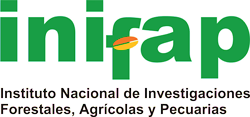Factors that influence soil hydric erosion in a temperate forest
DOI:
https://doi.org/10.29298/rmcf.v11i59.673Keywords:
Physical degradation, forest ecosystems, erosion by pedestals, soil organic matter, soil lossAbstract
Forest ecosystems are important in the contribution of goods and services to society; however, they may be affected by water erosion, which represents a serious problem in Mexico. Therefore, the objective of this work was to determine the factors that explain this type of degradation in the temperate forest. The factors that influence water erosion were selected through literature review, nationally and internationally, with criteria for use in management and monitoring programs. To assess erosion loss, the measurement of pedestals was used. Statistically, Pearson's correlation and Principal Component Analysis (PCA) were used. The results obtained revealed that for Pearson, the apparent density (r = 0.64), slope (r = 0.59) and the percentage of rocks on the soil surface (r = 0.57), showed a positive correlation with water erosion, so by increasing their values, the presence of pedestals increases. Negative correlation was determined with depth (r = -0.48) and percentage of soil organic matter (r = -0.45). At higher magnitudes of those parameters, the presence of pedestals decreases as expressions of the degree of soil erosion. Through the PCA, they also directly influenced the thickness of the mulch, bare soil and soil compaction. Positive correlation with percentage of bare soil and compaction was also identified. While there was no significance with organic matter, infiltration capacity and soil depth. The indicated factors must be taken into account to facilitate future monitoring.
Downloads
Published
How to Cite
Issue
Section
License
The authors who publish in Revista Mexicana de Ciencias Forestales accept the following conditions:
In accordance with copyright laws, Revista Mexicana de Ciencias Forestales recognizes and respects the authors’ moral right and ownership of property rights which will be transferred to the journal for dissemination in open access.
All the texts published by Revista Mexicana de Ciencias Forestales –with no exception– are distributed under a Creative Commons License Attribution-NonCommercial 4.0 International (CC BY-NC 4.0), which allows third parties to use the publication as long as the work’s authorship and its first publication in this journal are mentioned
The author(s) can enter into independent and additional contractual agreements for the nonexclusive distribution of the version of the article published in Revista Mexicana de Ciencias Forestales (for example, include it into an institutional repository or publish it in a book) as long as it is clearly and explicitly indicated that the work was published for the first time in Revista Mexicana de Ciencias Forestales.
For all the above, the authors shall send the form of Letter-transfer of Property Rights for the first publication duly filled in and signed by the author(s). This form must be sent as a PDF file to: ciencia.forestal2@inifap.gob.mx
This work is licensed under a Creative Commons Attribution-Noncommercial 4.0 International license.






